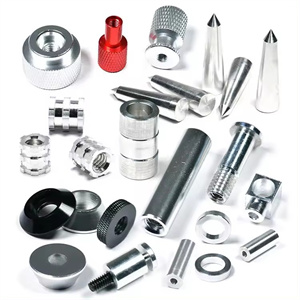CNC machining has a wide and important application in the field of communication equipment.
Firstly, in the manufacturing of base station equipment, CNC Machining can accurately process various complex shaped and high-precision components, such as antenna brackets, filter housings, etc. The accuracy and quality of these components are crucial for ensuring the signal transmission stability and reliability of the base station. For example, antenna brackets processed by CNC can ensure the installation angle and position accuracy of the antenna, thereby optimizing the signal coverage range.
Secondly, in communication terminal devices such as mobile phones, tablets, and other products, CNC Machining is used to manufacture structural components such as casings and internal frames. Taking the mobile phone case as an example, CNC machining can achieve exquisite appearance, such as smooth curves and fine chamfers, while ensuring the dimensional accuracy and strength of the case, providing good protective performance.
Furthermore, in optical communication equipment, CNC machining can process high-precision key components such as fiber optic connectors and couplers. The accuracy of these components directly affects the transmission efficiency and stability of optical signals.
In addition, CNC machining can also be used to manufacture cooling components in communication equipment, such as heat sinks, heat sinks, etc. Ensure that the equipment can effectively dissipate heat during high-power operation, maintain normal operating temperature, and ensure the performance and lifespan of communication equipment.
The machining characteristics of CNC machining:
Metal component processing: such as manufacturing sheet metal steel covers, aluminum shells, etc. Sheet metal can be processed through processes such as laser cutting and sheet metal bending. Proper control of the bending process can ensure the quality and tolerance of the parts. For aluminum casings, precision machining processes such as wire cutting and electrical discharge machining (EDM) are involved, which can produce extremely precise parts at high cutting speeds, with low costs, and can also be operated independently.
Improve accuracy and stability: Meet the high requirements of communication equipment for component accuracy and strength. For example, when processing structural components, connectors, etc. with complex shapes or high precision requirements, the accuracy and stability of dimensions can be ensured.
Implementing complex structures: Communication devices may have various complex geometric shapes, and CNC machining can process parts with special surfaces, cavities, or hole positions according to design requirements.
Mold manufacturing: used to produce injection molds, die-casting molds, etc. related to communication equipment, ensuring high precision and durability of the molds, thereby producing high-quality plastic or metal components.
Customized production: It can flexibly carry out small batch or personalized production according to the design and specification requirements of different communication devices.
Improving surface quality: Some communication equipment components used outdoors can increase their service life through post-treatment methods such as anodizing and powder coating, covering processing marks to achieve a better appearance.
In the manufacturing of communication equipment, CNC machining helps to improve product quality, performance, and reliability, adapting to the constantly evolving requirements of communication technology for equipment. Meanwhile, with the advancement of technology, CNC machining is also moving towards higher precision, more complex shape machining, and more efficient direction.
